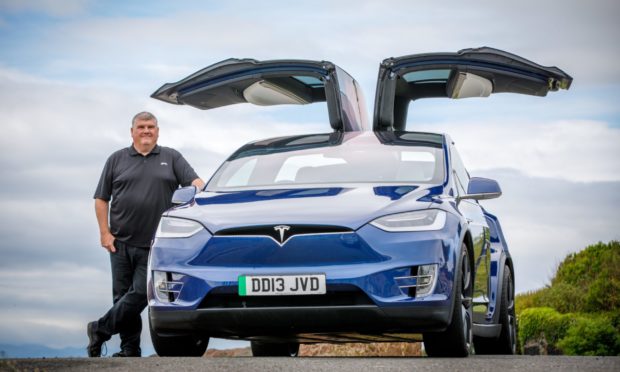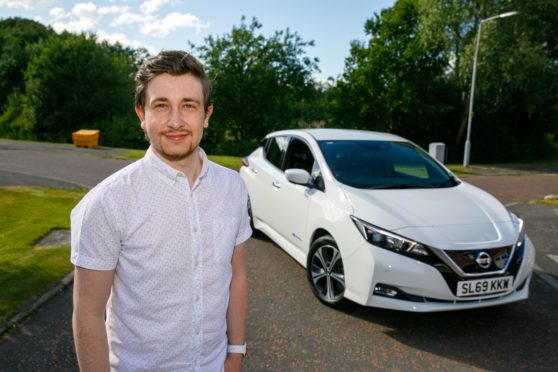Electric car ownership may be touted as the future of automobile transport, but there are problems preventing greater uptake.
While becoming more prevalent on the roads, electric vehicles still have a way to go before they take over petrol and diesel cars.
Despite being substantially cheaper to run and gentler on the environment than fossil fuel-driven vehicles, there are still problems facing new electric car owners. These include charging them at home for people living in flats.
We speak to experts and electric car owners to understand what you need to know ahead of making a purchase.
Getting charged
Fifer Martin Woolley, whose family has embraced the electric car revolution, feels the charging network needs to be improved to make it more user friendly.
Most charging stations in the country are operated by ChargePlace Scotland, although the service is currently being overhauled and will be managed by Swarco.
Martin said: “The information at the charging points can be vague. The screens don’t tell you what they are charging you, and that can vary from place to place, so you don’t know what you’re paying until it comes off your credit card — which is not very nice.
“I think the reason for that is when the charging stations were all installed it was free to use. But that’s not the case now.
“I suspect they didn’t plan ahead when they were throwing up the charging stations.”
How do I use ChargePlace Scotland?
To use a ChargePlace Scotland station, you need to sign up and pay an annual fee of £20.
A card is then sent to the user’s home, which allows them to activate a charging session at a station.
Card delivery has recently been sluggish while the Swarco handover takes place.
Outside of the ChargePlace Scotland network, there are stations in the outskirts of Perth and at several supermarket car parks.
What if I live in a block of flats?
One of the most common problems with electric car ownership is the inability of those living in flats to get a charging station at home.
People with driveways or garages are able to get a station installed and connect it to their own electrics.
Electrochemist Euan McTurk said a change of mindset may be required for drivers.
The Inverkeithing man, who has studied at St Andrews University and Oxford, hails Dundee as one of leading cities in the country for implementing car charging facilities.
But he said even in Dundee electric car owners who live in flats may have to get used to the idea of leaving their cars behind to charge.
“We don’t always need to think of charging our cars like going to the petrol station and staying with the car while it fills up,” he said.
“If you live locally, you can abandon your car… for a few hours overnight and come back in the morning.”
Euan admits there needs to be an expansion of the network to account for everyone if electric becomes the norm.
Sites such as the roof of the Gellatly and Olympia car parks are good evidence of this in practice, he said.
Electric car driver John van Dieken agrees this is a problem.
The Buckhaven man started driving electric to help ease his asthma.
He has the luxury of a charging point in his driveway — something not everyone can do.
“Sorting that out for people in blocks of flats, that is the next big challenge,” he said.
Is funding support still in place?
Yes, although grants are not as generous as they once were.
Energy Saving Trust offers loans for used or new electric vehicles, up to £28,000.
The loans are interest-free and need to be repaid within six years.
Grants of up to £2,500 are available from the UK government for low-emission vehicles.
What is the government doing to alleviate electric car problems?
The Scottish Government has ploughed more than £45m into the ChargePlace Scotland network, which has more than 1,800 public points.
A spokesman said they are committed to easing problems surrounding electric car ownership.
“We will continue to support investment in electric vehicle charging in Scotland, including projects providing charging opportunities specifically targeting those without consistent access to off-street parking.
“Transport Scotland has also made grant funding available to help organisations install electric vehicle charging infrastructure on their premises, providing more charging options for those without access to charging at home.”

